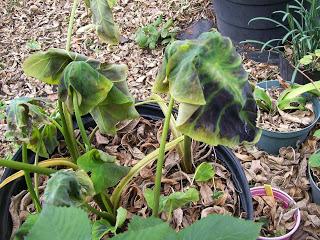 Black Leaf Elephant Ear
Black Leaf Elephant Ear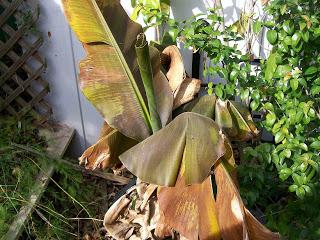 Dwarf Banana
Dwarf Banana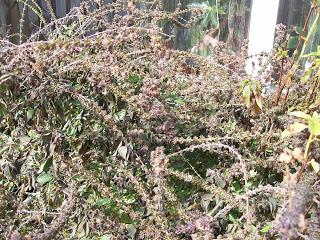 African Blue Basil
African Blue Basil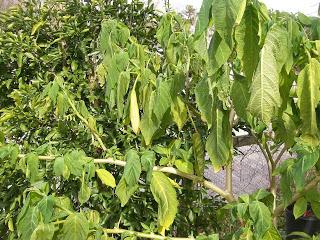 Yellow Brugmansia
Yellow BrugmansiaNot much of a surprise there huh?Well, here are the ones that shook it off like it was nothing:
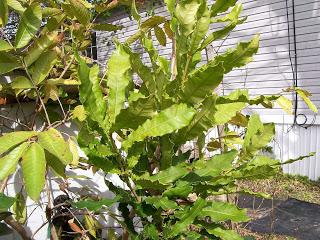 Macadamia Nut Tree
Macadamia Nut Tree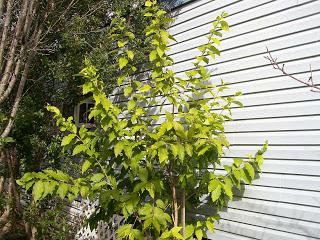 Peanut Butter Fruit Tree
Peanut Butter Fruit Tree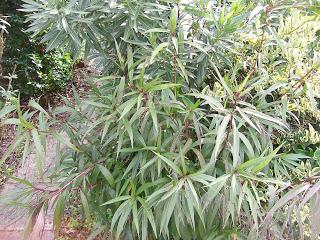 Mexican Petunia
Mexican Petunia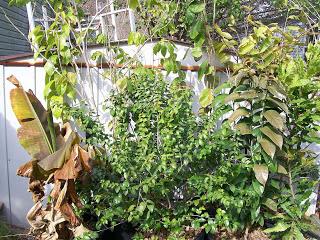 Surinam Cherry
Surinam CherryThere are a couple of things at play here, let's take a look at a few of them.The plants themselves.When we think of many “exotic” fruit trees, we think of the shores of Hawaii or maybe down in Brazil or even Southern most Florida. Let me use the Surinam Cherry as an example.The plant is native to Surinam, Guyana and French Guiana to southern Brazil (especially the states of Rio de Janeiro, Paraña, Santa Catharina and Rio Grande do Sul), and to Northern, Eastern and central Uruguay. Sounds pretty mild, almost like a tropical oasis, right? They probably don't have too many ski slopes or uses for ice scrapers. Yet, through trial and error it has been discovered that young Surinam Cherries can be damaged by temperatures below 28 degrees, and well-established plants have suffered only superficial injury at 22 degrees. Do they actually get that cold there or can plants adapt to more than we give them credit for?Duration. I mentioned above that the killer cold was here for maybe 5-6 hours. This can be critical. Plants have the uncanny ability to protect themselves for brief periods of time. After that time is up, then the plant will die. My Citrus is a good example of this. They will go semi dormant. They do not lose their leaves like, say a maple tree does, but it still hunkers down and gets ready for the cold. As long as a plant is well watered and healthy, it can possibly survive brief encounters into the very cold abyss. There is also another reason for the “so far” good luck in the survival rates of my exotic plants, Microclimates.A microclimate is the climate of a small area that is different from the area around it. It may be warmer or colder, wetter or drier, or more or less prone to frosts.Take another look at the Peanut Butter Fruit Tree. It is right NEXT to the house and tucked slightly under some other trees. Both of those things offer some protection from the cold and frost. There are other things that effect microclimates. On a large scale, bodies of water will keep surrounding areas warmer. As will roads, buildings, walls, even large rocks can absorb heat during the day and give off a couple of degrees of protection at night. Heavy clay soils can act much like paved surfaces, moderating the temperature near ground level.If you live in a valley, you will be cooler than your neighbors up hill. Cold air is heavier than warm, so it settles down into that open area. Long time gardeners in an area have learned to take advantage of these type of areas. If you are just moving into a place, it will be difficult to know where the micros are. A couple of pieces of advice, look at your neighbors, see what they are growing. Investigate the yard at different times of the day, month and year, it will consistently be changing. I understand, that one is time consuming, so don't be in a hurry to plant a whole bunch of stuff until you learn what you have. You can also ask around, check with your local extension agents. If you don't feel like doing any of those things, or want to experiment with some plants that just don't sound like they will do well where you are and PLEASE, use some common sense here.....I promise, a coconut palm tree will NOT grow in Maine.....remember the title of this article...Just Trial It!!Happy Growing!Darren

